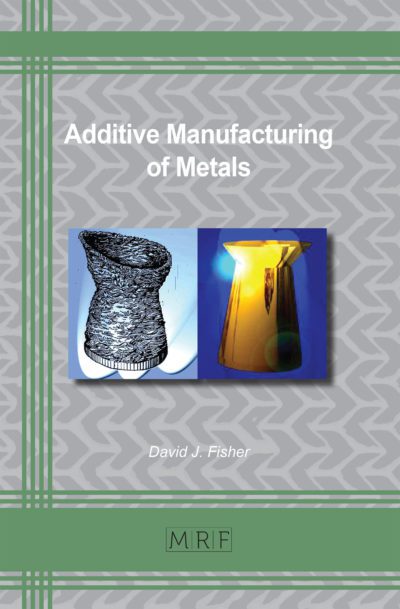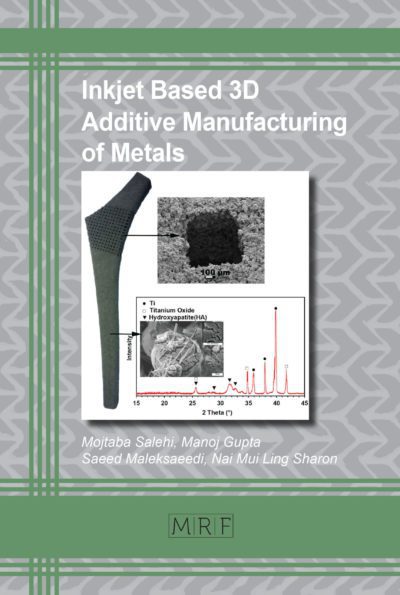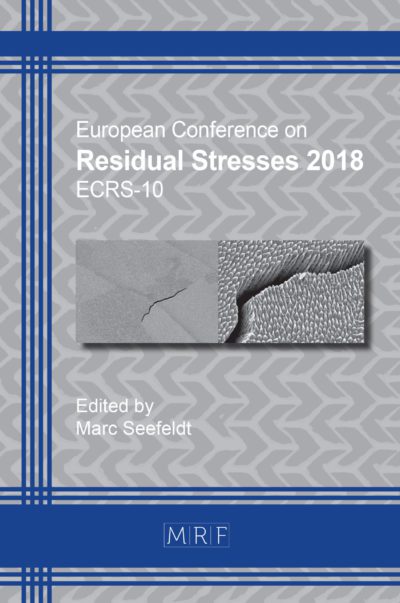Thermal effects on bead morphology in fused filament fabrication: A numerical approach to recycled PLA deposition
Mario Emanuele DI NARDO, Francesco NAPOLITANO, João DIAS-DE-OLIVEIRA, Tiago SILVA, Pietro RUSSO, Pierpaolo CARLONE
Abstract. This study investigates the behavior of recycled PLA during extrusion and deposition processes through numerical simulations and experimental analysis using Differential Scanning Calorimetry (DSC). The thermal analysis characterized key material properties, such as glass transition and melting temperatures, which are critical for optimizing numerical model parameters. The simulation, conducted in a two-dimensional domain using the finite volume method, analyzed the viscous flow of semi-liquid PLA, highlighting cooling effects and viscosity variations. The results demonstrated a stable and uniform deposition process, with a sharp interface between PLA and air and controlled solidification on the substrate. The Cross-WLF viscosity model accurately described the material’s behavior, capturing shear-thinning phenomena and temperature dependency. These findings contribute to the understanding of recycled PLA’s performance in additive manufacturing processes, providing insights into optimizing its thermal and flow properties for material extrusion process applications.
Keywords
Additive Manufacturing, MEX, Process Simulation, Finite Volume Method, Filament Morphology, Solidification
Published online 5/7/2025, 10 pages
Copyright © 2025 by the author(s)
Published under license by Materials Research Forum LLC., Millersville PA, USA
Citation: Mario Emanuele DI NARDO, Francesco NAPOLITANO, João DIAS-DE-OLIVEIRA, Tiago SILVA, Pietro RUSSO, Pierpaolo CARLONE, Thermal effects on bead morphology in fused filament fabrication: A numerical approach to recycled PLA deposition, Materials Research Proceedings, Vol. 54, pp 2381-2390, 2025
DOI: https://doi.org/10.21741/9781644903599-257
The article was published as article 257 of the book Material Forming
![]() Content from this work may be used under the terms of the Creative Commons Attribution 3.0 license. Any further distribution of this work must maintain attribution to the author(s) and the title of the work, journal citation and DOI.
Content from this work may be used under the terms of the Creative Commons Attribution 3.0 license. Any further distribution of this work must maintain attribution to the author(s) and the title of the work, journal citation and DOI.
References
[1] Phan, David D., et al. “Computational fluid dynamics simulation of the melting process in the fused filament fabrication additive manufacturing technique.” Additive Manufacturing 33 (2020): 101161
[2] Ufodike, Chukwuzubelu Okenwa, and Gaius Chukwuka Nzebuka. “Investigation of thermal evolution and fluid flow in the hot-end of a material extrusion 3D Printer using melting model.” Additive Manufacturing 49 (2022): 102502
[3] Ferri, Dino, Andrea Perolo, and Mirco Nodari. “Cross-WLF parameters to predict rheological properties of polylactic acid.” Annual transactions of the Nordic rheology society 25.1 (2017): 419-426
[4] Balani, Shahriar Bakrani, et al. “Influence of printing parameters on the stability of deposited beads in fused filament fabrication of poly (lactic) acid.” Additive Manufacturing 25 (2019): 112-121
[5] Xu, Xuguang, et al. “Numerical modelling of the viscoelastic polymer melt flow in material extrusion additive manufacturing.” Virtual and Physical Prototyping 19.1 (2024): e2300666
[6] Lei, Mingju, et al. “Numerical simulation and experimental study the effects of process parameters on filament morphology and mechanical properties of FDM 3D printed PLA/GNPs nanocomposite.” Polymers 14.15 (2022): 3081
[7] Papon, M. E. A., A. N. W. A. R. U. L. Haque, and M. A. R. Sharif. “Effect of nozzle geometry on melt flow simulation and structural property of thermoplastic nanocomposites in fused deposition modeling.” Proceedings of The American Society for Composites, Thirty-Second Technical Conference October. 2017
[8] Stewart, Samuel R., John E. Wentz, and Joseph T. Allison. “Experimental and computational fluid dynamic analysis of melt flow behavior in fused deposition modelling of poly (lactic) acid.” ASME international mechanical engineering congress and exposition. Vol. 57359. American Society of Mechanical Engineers, 2015
[9] Pigeonneau, F., et al. “Heating and Flow Computations of an Amorphous Polymer in the Liquefier of a Material Extrusion 3D Printer.” Additive Manufacturing, vol. 32, 2020, p. 101001, https://doi.org/10.1016/j.addma.2019.101001
[10] Costa, S. F., F. M. Duarte, and J. A. Covas. “Thermal conditions affecting heat transfer in FDM/FFE: a contribution towards the numerical modelling of the process: This paper investigates convection, conduction and radiation phenomena in the filament deposition process.” Virtual and Physical Prototyping 10.1 (2015): 35-46
[11] Jiang, Bingnong. Thermal simulations for guiding 3D printed polymers and composites used in Fused Filament Fabrication. Diss. 2023
[12] Comminal, Raphaël, et al. “Numerical modeling of the strand deposition flow in extrusion-based additive manufacturing.” Additive Manufacturing 20 (2018): 68-76
[13] Sanchez, Larissa Cristina, et al. “Rheological approach for an additive manufacturing printer based on material extrusion.” The International Journal of Advanced Manufacturing Technology 105 (2019): 2403-2414
[14] Van Waeleghem, Tom, et al. “Melt exit flow modelling and experimental validation for fused filament fabrication: From Newtonian to non-Newtonian effects.” Journal of Manufacturing Processes 77 (2022): 138-150
[15] Medibew, Tesfaye Mengesha, and Addisu Negash Ali. “Analysis and optimization of FFF process parameters to enhance the mechanical properties of 3D printed PLA products.” International Polymer Processing 38.1 (2023): 61-76
[16] Arab, Asghar, et al. “Investigation of Fibre Degradation in Natural Fibre Reinforced BioComposites.” International Conference on Sustainable Materials, Polymers and Composites: 03/07/2013-04/07/2013. 2013














